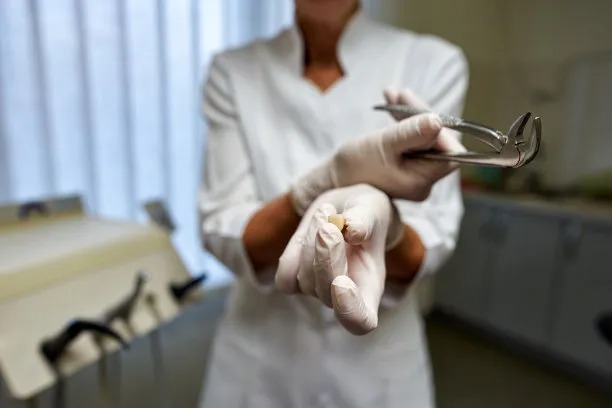The Complete Guide to Extracting a Tooth Safely and Effectively for a Pain-Free Experience
Summary: Tooth extraction can be a daunting experience for many, causing anxiety and fear of pain. This guide aims to provide a comprehensive overview of safely and effectively extracting a tooth while ensuring a pain-free experience. It covers the importance of preparing psychologically and physically for the procedure, details essential steps in tooth extraction practice, emphasizes post-extraction care to promote healing, and offers insights into professional dental assistance for complex cases. Armed with this knowledge, patients are encouraged to approach tooth extraction with confidence knowing they can minimize discomfort and reduce potential complications.
1. Mental and Physical Preparation for Tooth Extraction

Preparing for tooth extraction involves both mental and physical readiness. It is essential to approach the procedure with a calm mindset to alleviate anxiety. Engaging in relaxation techniques, such as deep breathing or meditation, can be beneficial. Understanding the process can also reduce fear; therefore, consulting with a dentist about what to expect during and after the extraction is crucial.
Physical preparation includes following your dentists instructions regarding food and drink on the day of the extraction. It is typically advised to avoid meals several hours before the appointment, particularly if sedation will be used. Arranging for transportation is also wise, especially if sedation is involved, ensuring a safe journey home.
Lastly, sharing any medical history or existing health conditions with your dentist is vital. This information can affect the extraction technique used and ensure that appropriate precautions are taken to avoid complications.
2. Steps to Safely Extract a Tooth
The actual extraction process is critical for ensuring a successful and pain-free experience. First, the dentist will conduct a thorough examination, including X-rays if necessary, to assess the tooths condition and its surrounding anatomy. This step is crucial in determining the extraction method to be used, ensuring that all relevant factors are considered.
Once the evaluation is complete, local anesthesia will be administered to numb the area around the tooth. This step is key in preventing any pain during the procedure. In some cases, sedation may be provided for more anxious patients, further enhancing comfort.
After anesthesia takes effect, the dentist will use specialized tools to loosen and remove the tooth carefully. They may employ techniques such as elevation or sectioning the tooth if it is particularly challenging to extract. Maintaining a steady hand and gentle approach is essential to minimize trauma to the surrounding gums and tissues.
3. Post-Extraction Care for Healing
Post-extraction care is vital for ensuring proper healing and minimizing discomfort. Once the dental procedure is complete, the dentist will provide specific instructions, which may include biting down on gauze to control bleeding. It is essential to follow these guidelines accurately to promote optimal recovery.
Patients should also be advised to avoid strenuous activities, smoking, or using straws for a few days after the extraction. These actions can disrupt the healing process and lead to complications like dry socket. Instead, resting and maintaining a balanced diet of soft foods will help speed up healing.
Managing pain post-extraction typically involves over-the-counter pain relievers or medications prescribed by a dentist. Staying vigilant about any signs of infection, such as increased swelling, redness, or fever, is also crucial, and patients should contact their dentist if these symptoms arise immediately.
4. When to Seek Professional Dental Assistance
While many tooth extractions can be managed with standard procedures, some cases may require professional dental assistance due to complexity. For instance, impacted wisdom teeth often necessitate a surgical approach, requiring a specialist’s skills and knowledge.
Patients should also consider seeking help if they have underlying health conditions that could complicate the extraction process, such as heart disease or diabetes. In these situations, a comprehensive evaluation by a dental professional can ensure the procedure is conducted safely.
Moreover, if a patient experiences excessive bleeding or unbearable pain after a seemingly routine extraction, reaching out for professional care is paramount. Prompt intervention can prevent further issues and ensure that recovery proceeds smoothly.
Summary:
Tooth extraction need not be a fearsome ordeal. By adequately preparing both mentally and physically, individuals can approach the process with confidence. Understanding the steps of the extraction and the importance of aftercare helps mitigate discomfort and promote healing while knowing when to seek additional dental assistance can safeguard against complications.
This article is compiled by Vickong Dental and the content is for reference only.


